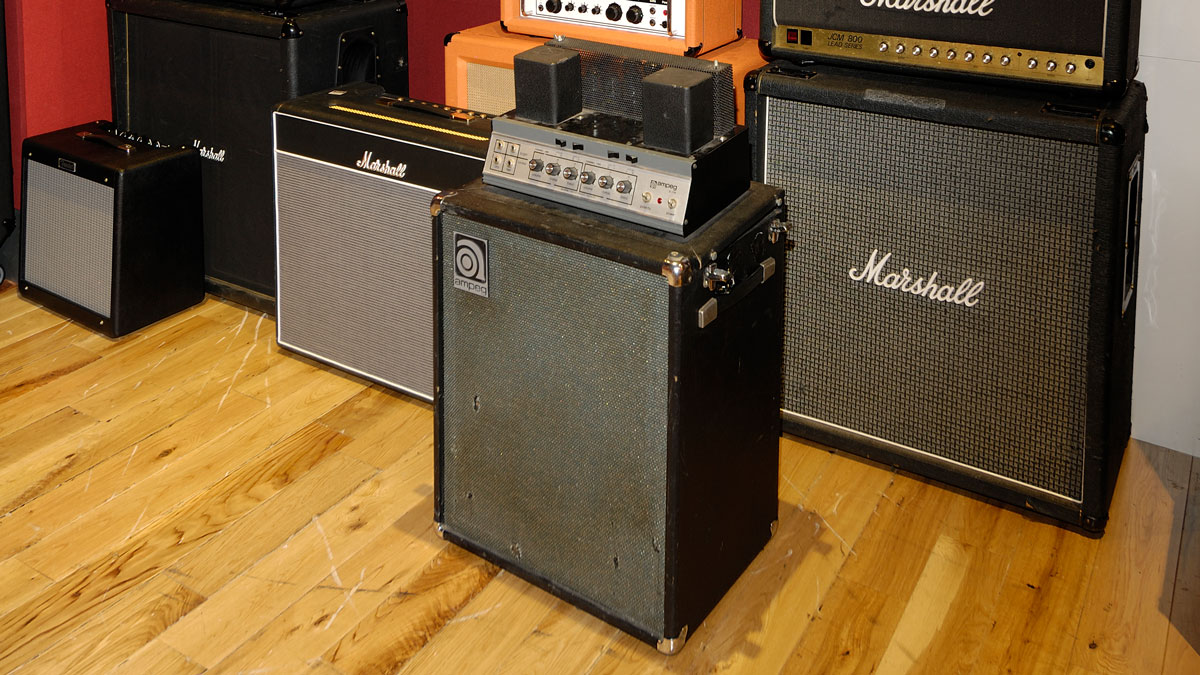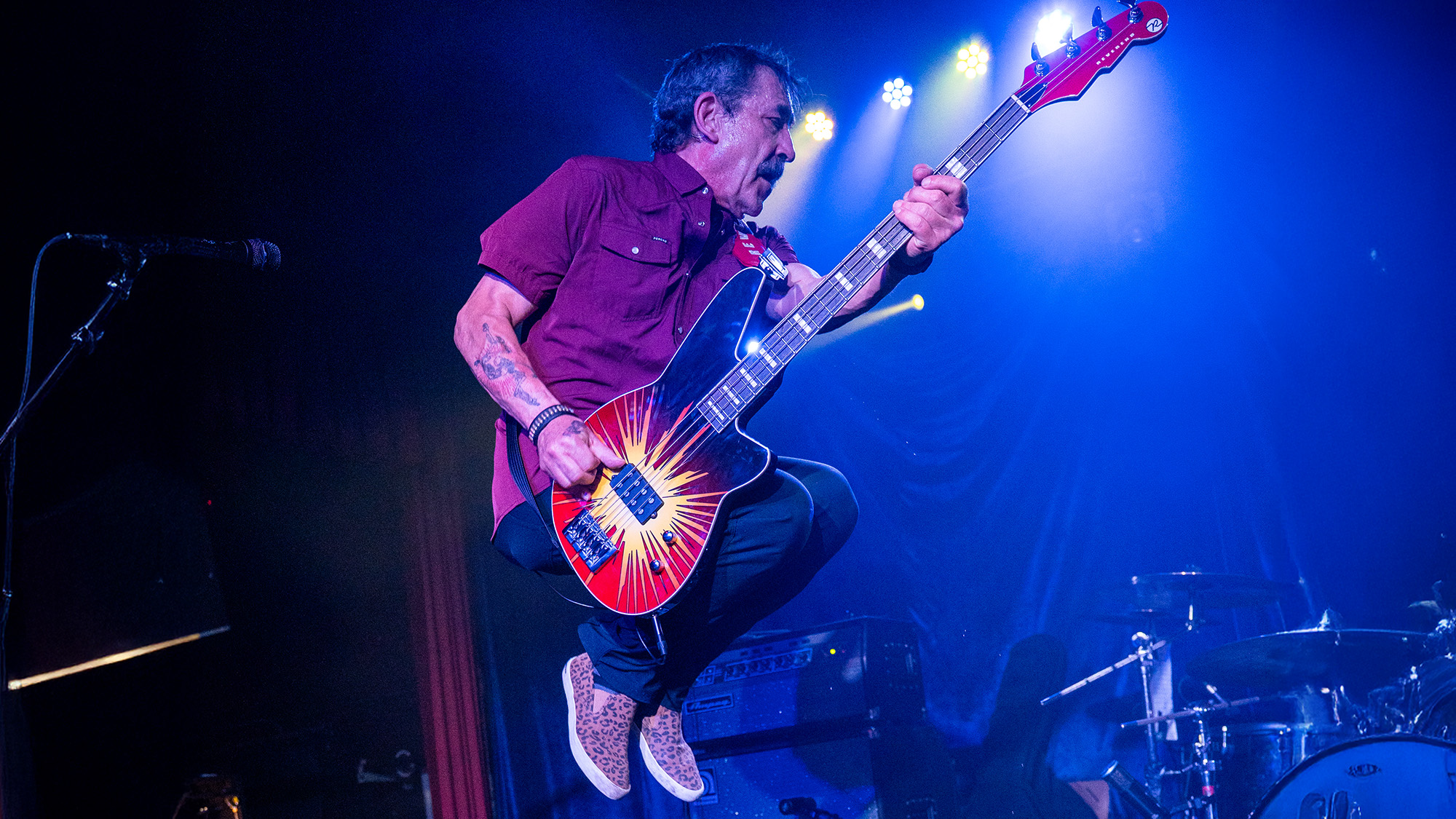
This bass amp, one of the true greats in the world of bass amplification, was designed by Ampeg’s Jess Oliver back in 1958, but it wasn’t until 1960 that it was introduced. The B-15 Portaflex, or ‘Portable Reflex Baffle Bass System’ as it was originally known, seemed both illogical and ingenious at the same time, as the amplifier head was stored inside the cabinet for transportation.
Four latches allowed the top of the B-15 speaker cabinet to be lifted off. With the amplifier secured to it with bolts, the whole assembly could be flipped over and dropped inside the cabinet, providing ample protection for its delicate tubes while in transit. Thus the B-15 was christened the ‘fliptop’.
Who used the B-15 Portaflex?
James Jamerson used one, as did Donald ‘Duck’ Dunn, Verdine White, John Paul Jones, Bob Glaub, Bob Babbitt, Marcus Miller, and many other bass stars, as it was a staple in recording studios throughout the ’60s. The B-15 amplifier itself is a 30-watt tube amp, of which there have been a few different revisions over the years: the sought-after 1964 and 1966 models were combined in Ampeg’s Heritage reissue unit a while back.
Should we all use this amp?
Well, some bassists say that the B-15 has a ‘tubby’ tone – and the ’66, although it’s much brighter than the ’64, doesn’t carry a huge amount of a bottom end through its single 15” speaker. By today’s standards, this 30-watt setup is a bit timid compared to the 800 watts-plus hard-hitters that power Ampeg’s own ‘fridge’ amp, the 810E.
The little amp’s catches and cabinet fixtures often rattled while in use, too, so the B-15 might not be the amplifier you’d want to throw around on a tour stage, if you could even hear it over the other musicians, of course. Not only that, it doesn’t have any of the features you’ll see on a modern amplifier.
All the latest guitar news, interviews, lessons, reviews, deals and more, direct to your inbox!
You will not be installing Impulse Responses and digital effects on this unit, and you will not use it without a speaker cabinet or load attached – as tubes don’t like that – and you will not be slipping it into your bass gigbag like a Trace Elliot Elf head.

That’s a whole lot of reasons not to use a B-15, buddy.
Sure – but on the upside, you’re going to be graced with a glorious tone, full of richness and the sensitivity that only passive pickups, tubes, transformers, and speakers can offer. The B-15 graced all the famous studios, where incredible classic albums and film scores were recorded, so there are plenty of thudding Motown tones or Carol Kaye-style pick sounds in there. It even sounds like the main theme from the film Bullitt, which doesn’t get cooler.
Is this thing expensive?
Older models can be, but if your pockets aren’t deep enough for an original vintage B-15, Ampeg still produces fliptop amps under the Portaflex name, from a super-cute 20-watt tube head to an 800-watt D-Class powerhouse. Each of these is capable of being housed inside its own cabinet, with 10”, 12”, or 15” speaker configurations. In addition, the revered B-15 sound has been digitally profiled and emulated in many top-tier processors. So try one out if you can!
